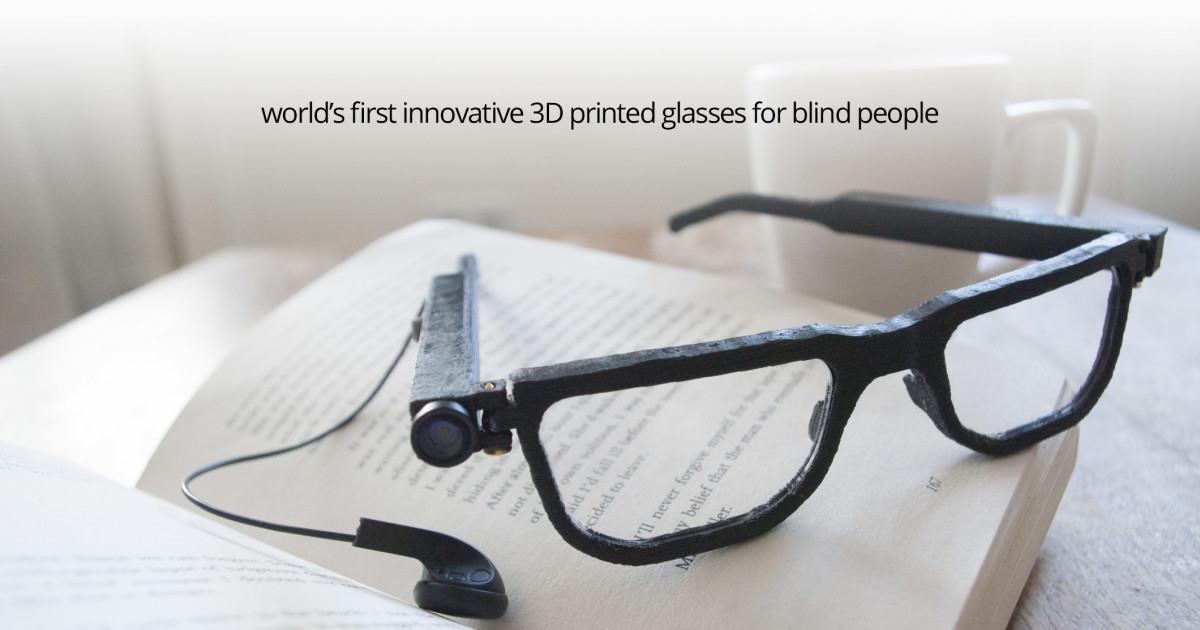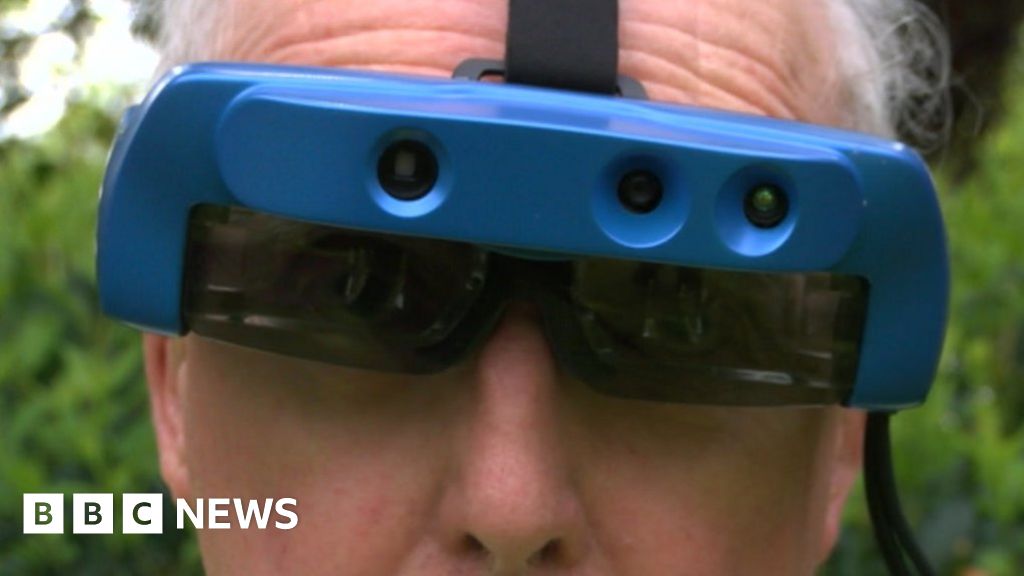Maximizing Efficiency with Screen Readers for the Blind: A Comprehensive Guide
Wiki Article
Discover Advanced Assistive Gadgets for Individuals With Aesthetic Disabilities
The landscape of assistive technology for people with aesthetic problems is advancing rapidly, offering a variety of ingenious devices that boost freedom and interaction (Braille displays and notetakers). From smart glasses that effortlessly merge visual input with acoustic advice to innovative navigation applications that redefine spatial awareness, these tools are improving possibilities. The most current developments in Braille modern technology and voice-activated systems dramatically add to accessibility. The effects of these growths prolong much past mere capability; they challenge conventional understandings of impairment and self-reliance. What might this indicate for the future of inclusion and support?Smart Glasses Innovations
Smart glasses represent a significant improvement in assistive innovation for individuals with aesthetic disabilities. These ingenious gadgets incorporate numerous attributes developed to improve the user's interaction with their environment. Geared up with electronic cameras and sensing units, smart glasses can catch real-time visual information, which is then processed and shared to the individual through sound feedback or haptic experiences. This performance enables individuals to get instant summaries of their environments, boosting their capacity to browse and involve with the globe.
In addition, advancements in synthetic intelligence have better boosted the capabilities of smart glasses. Maker discovering formulas can recognize faces, checked out message, and determine objects, making them invaluable devices for daily jobs. Individuals can obtain auditory hints that offer context regarding their environment, promoting independence and self-confidence.
Furthermore, the ergonomic layout and light-weight nature of many wise glasses make them appropriate for extended use, making sure comfort while enhancing capability. As these gadgets continue to develop, they hold the potential to transform the means people with aesthetic problems experience their daily lives, bridging the space between accessibility and modern technology. The continuous research and growth in this field assurance to increase the possibilities for smart glasses, making them a crucial part of modern-day assistive devices.
Navigating Apps and Equipment
Various navigation applications and devices have actually become crucial resources for individuals with aesthetic problems, considerably enhancing their capability to go across unknown settings. These innovations take advantage of general practitioner capability, audio signs, and real-time data to offer individuals with exact navigation help.One popular example is the Aira application, which connects users to qualified agents who can supply aesthetic descriptions of environments and navigation assistance through an online video feed. This service enhances the individual's spatial awareness and confidence while navigating. Another significant device is Seeing Eye GPS, which uses voice-guided navigating and factors of interest, enabling individuals to accessibility crucial details about their environments.

As modern technology remains to advancement, the development of much more advanced navigation devices guarantees to more empower individuals with visual impairments, helping with smooth movement and combination right into diverse atmospheres. Such developments contribute in promoting a much more inclusive culture.
Braille Technology Improvements
In recent times, improvements in Braille modern technology have actually significantly transformed how people with visual disabilities access info and engage with the world around them. The development of portable Braille displays has actually transformed analysis by allowing users to connect wirelessly to computers, smart devices, and tablets. These gadgets transform message right into Braille in real-time, allowing seamless interaction with electronic web content.
Moreover, ingenious Braille printers have arised, enhancing the production of responsive materials. Modern embossers are faster and a lot more efficient, permitting the rapid creation of Braille records and academic products. This efficiency reduces the moment and cost connected with producing Braille sources, making them extra obtainable to organizations and institutions.
Additionally, the integration of Braille with various other modern technologies, such as expert system and artificial intelligence, has opened up brand-new methods for tailored knowing experiences. Voice recognition and synthesis technologies can enhance Braille, offering a comprehensive technique to info circulation.
As the demand for comprehensive education and learning and work environment environments grows, these technical advancements play a crucial duty in empowering people with aesthetic disabilities, ensuring they have equivalent accessibility to details and possibilities in various aspects of life.
Wearable Devices for Independence
An expanding array of wearable tools is enhancing freedom for people with visual disabilities, offering ingenious remedies that improve navigation and daily living. Braille displays and notetakers. These devices utilize innovative modern technologies to provide real-time comments and support, advertising autonomy in various atmospheres
Wearable innovation likewise consists of smartwatches that can be set with accessibility features, enabling customers to get notifications, track their places, and even require help with the touch of a button. Some gadgets integrate man-made knowledge to analyze the setting, offering sound summaries of neighboring things or individuals.
Voice-Activated Assistive Solutions
Leveraging voice-activated assistive remedies has actually changed the landscape of assistance for individuals with aesthetic impairments, supplying hands-free communication and access to a range of tasks. These modern technologies use natural language processing and expert system to allow individuals to perform daily tasks with basic voice commands.
Furthermore, recent developments in voice recognition accuracy have enhanced the customer experience considerably, fitting diverse accents and speech patterns. This inclusivity makes sure that even more individuals can profit from these modern technologies, cultivating a higher feeling of autonomy.
Conclusion
In conclusion, the development of innovative assistive tools significantly boosts the self-reliance and lifestyle for people with aesthetic impairments. Advancements such as smart glasses, navigation apps, Braille modern technology, wearable devices, and voice-activated services collectively foster an even more inclusive setting. These technologies encourage individuals to browse their surroundings with self-confidence and involve more completely with the world, eventually advertising greater ease of access and level playing fields for individuals dealing with visual obstacles.The landscape of assistive modern technology for individuals with aesthetic disabilities is developing quickly, providing a range of innovative tools that boost autonomy and interaction.Smart glasses represent a substantial improvement in assistive modern technology for individuals with aesthetic disabilities. As these devices continue to develop, they hold the prospective to reinvent the method individuals with aesthetic problems experience their daily lives, linking the void between availability and innovation.In recent years, improvements in Braille innovation have actually dramatically transformed exactly how individuals with visual problems accessibility info and Smart glasses for the visually impaired involve with the globe around them. These modern technologies encourage users to navigate their surroundings with self-confidence and involve more fully with the globe, ultimately promoting higher availability and equal possibilities for people encountering visual obstacles.
Report this wiki page